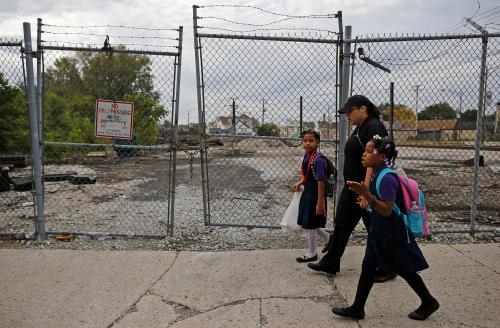Mortality rates for infants and children fell sharply for much of the 20th century, while life expectancy increased for adults. Somewhat later fertility rates began to decline, first in developed nations and more recently in developing countries. These major demographic shifts have already had significant effects on the age structure of the populations of most of the industrialized world, reducing the number of youths relative to adults. The transition will continue into the 21st century. The populations of most developed nations will have much higher elderly dependency ratios in the coming decades. After varying delays, further declines in fertility and a progressive aging of populations will occur in developing nations as well.
Japan is the most prominent example of an industrial nation whose fertility rates have fallen and whose population is aging. Between the end of World War II and the end of the 20th century, Japanese fertility declined from over 4 to some 1.4 lifetime births per woman. The share of youths in the total population fell from over 45 percent to less than 21 percent between 1950 and 2000. Projections for the share of elderly in the total population show a near doubling over the next five decades from 17.2 percent to 36.9 percent. The dramatic nature of Japan’s demographic shift relative to developed countries as a whole can be seen in visual terms in Figure 1, based on the revised UN projections released in 2001.
Changes in youth dependency are even more important for developing nations. For several decades after 1950, youth dependency in many developing nations actually increased substantially. Projections for the 21st century tend, however, to show marked falls in fertility, declining youth dependency, and eventual population aging — though lagging behind by several decades the experiences of developed nations.
Substantial research in both theoretical and empirical macroeconomics has been devoted to analyzing the implications for national economies of these profound demographic changes. The focus of much of this work has been on population aging and its effects on saving, investment and growth. Unfortunately, much of the analysis of the relationship between population and economic growth initially concentrated just on the size and growth rate of the total population, paying little attention to shifts in the age structure of the population. From a policy perspective, research has largely focused on the increasing burdens that rising elderly dependency ratios will place on national budgets and pension systems and on the menu of possible options for reform.
The least studied aspects of the demographic shifts are the cross-border interactions: how demographic change in individual open economies influences macroeconomic developments abroad and the global balance of saving and investment flows. In our own work we have been especially concerned with the spill-over effects of demographic changes in one country on foreign economies through changes in exchange rates and other external-sector variables and with the consequences for saving and investment flows in the world economy as a whole.
As our research progressed, we became increasingly dissatisfied with the treatment of demographic variables in macroeconomic models. Rather than treating youth dependency, elderly dependency, and the sizes of the population and labor force as exogenous inputs to macroeconomic analysis, we sought increasingly to incorporate more of the demographics as integral, endogenous parts of the modeling framework. By paying attention to the entire age distribution of the population and its endogenous evolution through time, we became able to analyze a broad range of demographic issues and their interaction with macroeconomic developments.



